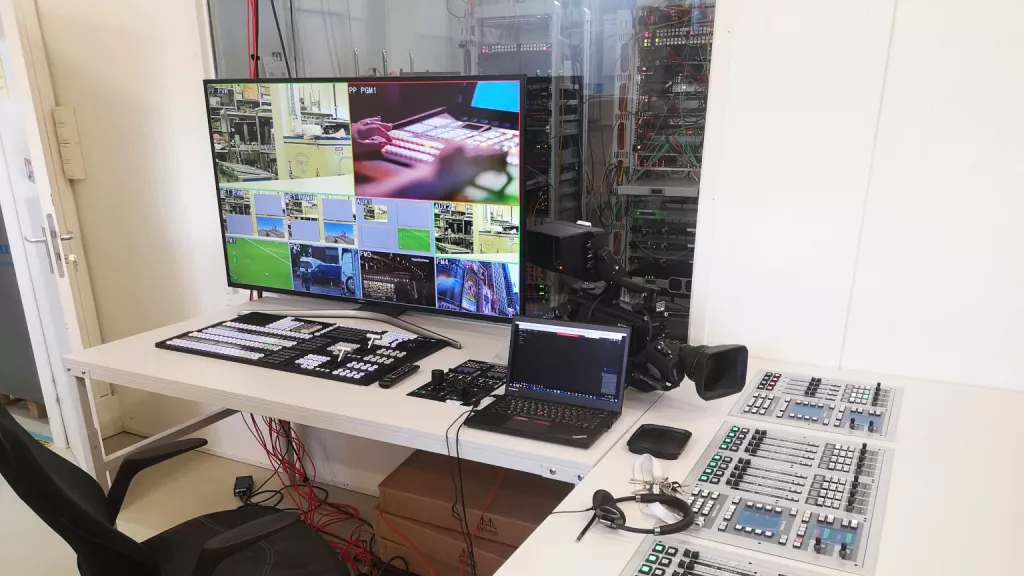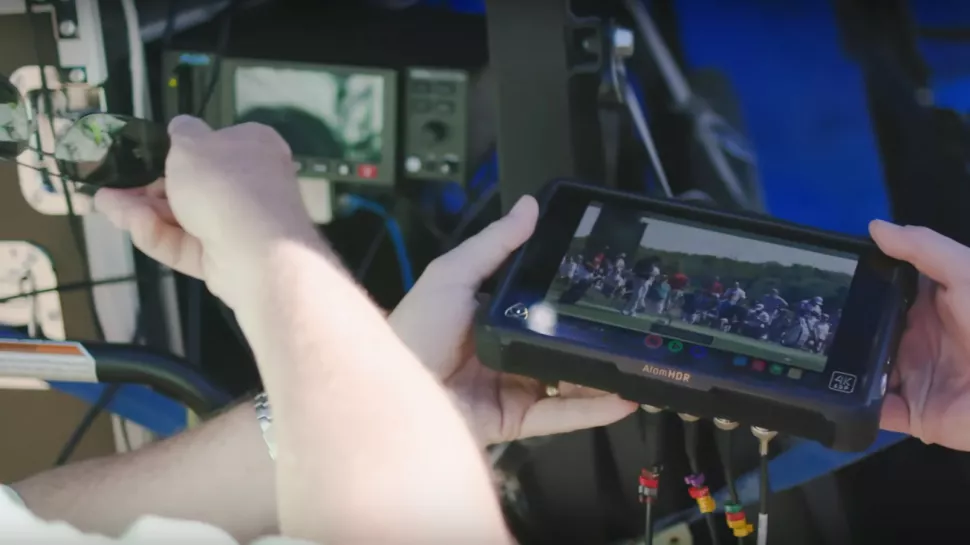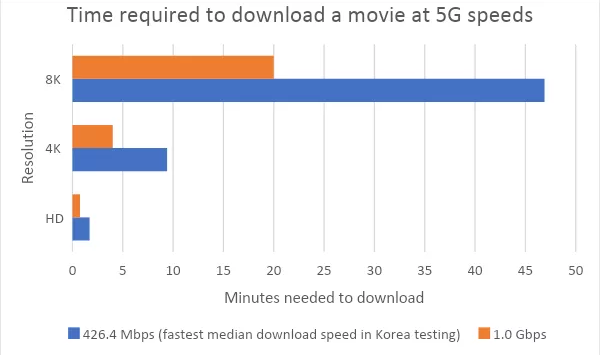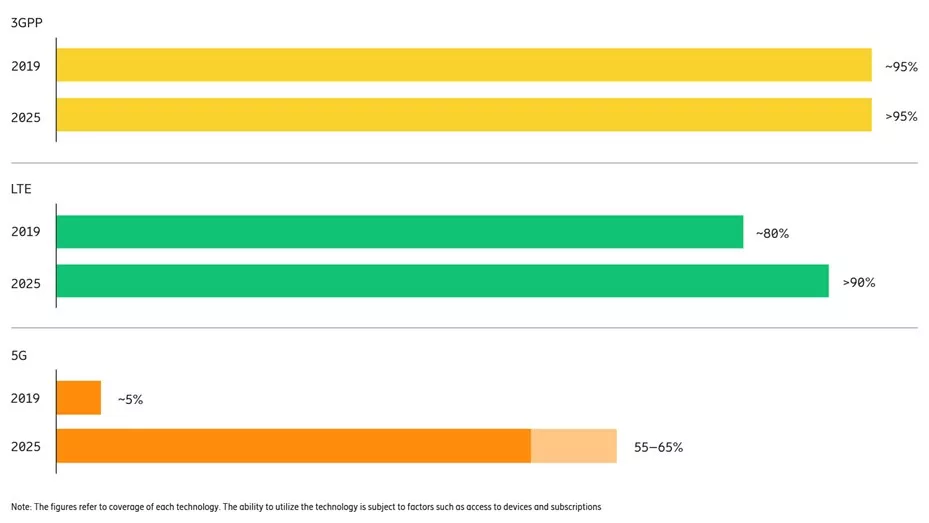10 Ways 5G Will Revolutionize Broadcasting
5G broadcasting will enable more cost-effective content delivery, improve production techniques and provide a better experience to consumers

Before the internet transformed virtually every facet our lives, broadcasting was the only way to disseminate information to the masses in real time.
The invention of radio and television were both revolutionary in their own ways, delivering audio and video into millions of homes worldwide. News, sport and other content was immediately accessible, making the public more informed and entertained.
The story of both technologies is one of iteration. The quality and variety of modern radio broadcasts would be unrecognizable to a listener in the early 20th century, while color, satellite and new standards have created modern television.
But broadcasting is on the cusp of a revolution. 5G will change how events and programs are captured, produced and transmitted to people around the world. Broadcasts will become more interactive, more innovative and more efficient.
In this post we showcase some of the top 5G use cases that you can expect to see within the broadcasting industry in the coming years.
1. Remote production
5G offers faster speeds, greater capacity and lower latency when compared to previous generations of mobile networks. Although it’s possible to carry out remote production using 4G, the superior bandwidth and reliability makes remote production a realistic proposition for broadcasters.

Traditionally, live outside broadcasts have required a team of camera operators, production staff and directors on-site. In addition to intensive labor costs, the deployment of an outside broadcast truck and the use of satellite capacity increases expense considerably.
5G remote production reduces the number of staff required on-site and the need for a truck as camera feeds can be sent instantly to a centralized production hub. This reduces costs and allows production teams to work across multiple events on a single day. This results in greater quality for consumers.
2. Network slicing
Network slicing will be crucial for remote broadcasts in the future. At present, the limited number of users on commercial 5G networks means there is little risk of broadcasters not having sufficient capacity to transmit their programs.
However, as the number of 5G subscribers increases over the coming years, there will be a need to provide a guaranteed level of throughput. Network slicing does this by effectively fencing off part of a 5G network for a particular application. In effect, broadcasters will be able to request network slices in the same way they currently book satellite capacity.
3. Greater creativity
But it’s not just about cost effectiveness. 5G networks will increase the variety of creative options open to producers. 5G-enabled cameras—free from the constraints of wires—will allow operators to roam freely across a studio space or a sports venue, capturing images that would previously have been impossible to record.

Feeds can then be sent back to an outside broadcast truck or to a remote production hub across the 5G network. This is of particular value to sports broadcasters, who can use the same camera for pre- and post-event content and to cover the event itself.
4. Mobile production
In 2004, BBC News gave journalists 3G phones so they could live stream reports and events in the field. The idea was not to replace conventional camera crews, but allow reporters to provide reports before the production team arrived. Naturally, quality was sporadic, but advances made in both mobile technology and networks since has given rise to an entire field of mobile journalism (mojo). Smartphones are now capable of capturing, editing and even streaming live images. Glen Mulcahy, expert trainer at the Thomson Foundation, believes that “By 2020, when 5G goes mainstream, mojo will dominate news.”
5. Better streaming for users
The same characteristics of 5G (speed, capacity and latency) that will aid production will also benefit end users. 5G will support higher quality streams in 4K Ultra-High Definition (UHD), while the densification of networks through micro infrastructure such as small cells will ensure mobile users can actually watch them in the quality for which they were intended.

Meanwhile, lower latency will also ensure that live events—such as news, election debates or sport—are shown as close as possible to the moment they are captured. This will reduce the risk of a neighbor’s screaming or a rogue notification spoiling an imminent goal, wicket or touchdown.
6. Multicast streaming
The constraints of 4G networks meant that significant efforts were placed into multicast streaming. Whereas the majority of streaming is achieved using unicast transmissions, which send content to an individual user rather than many users, multicast is similar to conventional broadcasting in that it sends the same transmission to multiple devices. Multicast promises to maintain the same level of quality, even as the number of viewers increases, without requiring additional spectrum or capacity. Operators benefit from greater efficiency and cost effectiveness.

Although the greater capacity of 5G (and limited adoption) has made the immediate need for multicast streaming redundant, increasing numbers of 5G subscribers and more data-intensive streams will place more strain on networks in the future. According to Ericsson, there will be 2.6 billion 5G users by 2025, consuming an average of 24GB a month—growth driven by video.
7. Immersive entertainment
Verizon showcased its 5G tech in real-time rendering of effects from "Star Wars: The Rise of Skywalker." The network partnered with Walt Disney Studios’ StudioLAB for a demo at the premiere afterparty in Hollywood, where guests were able to interact with Sith troopers in real-time.
Two actors played the troopers working in a remote location 15 miles away. Those who took part in the demo could approach a screen and interact with the two Sith troopers. The troopers were able to react in real-time.

“Both the StudioLAB and Verizon believe 5G will fundamentally change everything about how entertainment media is created, distributed and consumed,” said Nicki Palmer, chief product development officer at Verizon.
“The speed and low latency of 5G can unlock incredible creative capabilities,” added Ben Havey at Disney Studios StudioLAB. “We want to give storytellers early access to this new technology so they can continue to bring unparalleled experiences to audiences around the world.”
And in November, EE streamed a 360-degree augmented reality (AR) Bastille concert from Birmingham New Street station to Edinburgh and Liverpool.
8. Remote broadcasting
The greater reliability of 5G means that mobile networks could be a more cost-effective way of providing traditional broadcasts to remote areas. The construction of a 5G network can be more efficient than maintaining expensive bespoke broadcast infrastructure such as radio and television masts—and has the added benefit of delivering ultrafast mobile internet.

This, in turn, could increase the economic argument for rural 5G. As part of the 5GRuralFirst trial in Orkney, the BBC created a dedicated radio app for residents of Stromsay—an area with poor connectivity and digital radio coverage—to ensure the technology is fit for purpose.
9. Personalized broadcasting
Personalization is viewed by many within the industry to be the future of broadcasting. Viewers will be able to select from a variety of video and audio feeds, as well as on-screen graphics and other elements. 5G will enable these experiences over mobile networks, with standards bodies working on standards that allow for the personalization of broadcasts. And object-based media standards break down broadcasts into different modules, which are displayed according to factors such as user preference and device. For example, it might be that one viewer prefers a sign language presenter while another might have a smaller device or slower connection.
10. Advanced advertising
The transition of broadcast from a one-way transmission to a two-way conversation will provide opportunities for broadcasters to offer more personalized advertising experiences that rival online giants. Sky already does this in the U.K. through its AdSmart platform, but the sheer amount of data possessed by mobile users make this an audience treasure trove for 5G broadcasters.

5G will not only create a massive captive audience for advertisers, but will allow for more advanced creatives that attract attention and make it possible to deploy algorithms that display the most appropriate creatives in real time. For broadcasters struggling with declining commercial revenues—5G represents a significant opportunity.
This story originally appeared on TVT's sister publication 5GRadar.
Get the TV Tech Newsletter
The professional video industry's #1 source for news, trends and product and tech information. Sign up below.
